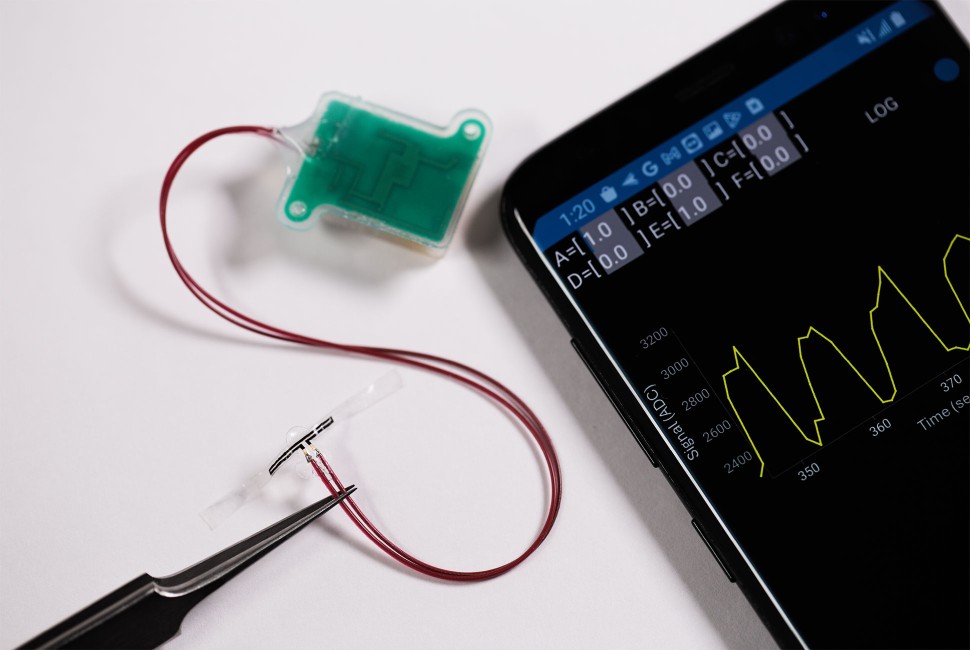2024-03-25 ノースウェスタン大学

To monitor the bladder, the new device comprises multiple sensors, which work together to measure one simple parameter: strain. As the bladder fills, it expands. The fuller the bladder becomes, the more it stretches. This stretching pulls on the elastic-like device to signal strain.
<関連情報>
- https://news.northwestern.edu/stories/2024/03/gotta-go-new-bladder-device-lets-you-know/
- https://www.pnas.org/doi/10.1073/pnas.2400868121
手術後の膀胱機能をモニターするためのワイヤレス埋め込み型バイオエレクトロニクスシステム A wireless, implantable bioelectronic system for monitoring urinary bladder function following surgical recovery
Jihye Kim, Matthew I. Bury, Kyeongha Kwon, +24, and John A. Rogers
Proceedings of the National Academy of Sciences Published:March 28, 2024
DOI:https://doi.org/10.1073/pnas.2400868121
Significance
Increasing interest in personalized medical systems motivates the development of bioelectronic implants for sensing physiological functions. Such implants could potentially provide physicians with real-time information to guide treatment and management strategies regarding tissue disease or trauma. Within the context of urinary bladder dysfunction, internal pressures can be indicative of bladder recovery following surgical interventions. This study reports a fully implantable system for quantitative measurements of the temporal dynamics of bladder filling and voiding via wireless telemetry, employing stretchable strain gauges in both permanent and bioresorbable forms. Validation studies in rodent and nonhuman primate models demonstrate the potential for this system to provide personalized treatment and rehabilitation strategies to human counterparts.
Abstract
Partial cystectomy procedures for urinary bladder–related dysfunction involve long recovery periods, during which urodynamic studies (UDS) intermittently assess lower urinary tract function. However, UDS are not patient-friendly, they exhibit user-to-user variability, and they amount to snapshots in time, limiting the ability to collect continuous, longitudinal data. These procedures also pose the risk of catheter-associated urinary tract infections, which can progress to ascending pyelonephritis due to prolonged lower tract manipulation in high-risk patients. Here, we introduce a fully bladder-implantable platform that allows for continuous, real-time measurements of changes in mechanical strain associated with bladder filling and emptying via wireless telemetry, including a wireless bioresorbable strain gauge validated in a benchtop partial cystectomy model. We demonstrate that this system can reproducibly measure real-time changes in a rodent model up to 30 d postimplantation with minimal foreign body response. Studies in a nonhuman primate partial cystectomy model demonstrate concordance of pressure measurements up to 8 wk compared with traditional UDS. These results suggest that our system can be used as a suitable alternative to UDS for long-term postoperative bladder recovery monitoring.


